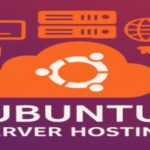
In today’s rapidly evolving digital landscape, many businesses are finding it imperative to migrate their operations to the cloud to leverage the myriad benefits it offers. Cloud migration not only enhances flexibility, scalability, and efficiency but also significantly reduces operational costs and improves disaster recovery capabilities.
However, transitioning to a cloud environment is a complex process fraught with challenges and risks that can deter even the most seasoned IT professionals. This guide aims to demystify the cloud migration process, providing key strategies and best practices to ensure a smooth and successful transition. For expert assistance, consider leveraging cloud migration services, which can provide invaluable support throughout your journey.
Planning Your Cloud Migration
Understanding Your Migration Goals and Objectives
The foremost stage of the available cloud migration plan is establishing an ambitious objectives and goals statement. What is your primary motive for going to the cloud? The achievement of specific business goals may be driven by anything from cost reduction to improved scalability to enhanced security. Thus, understanding your goals will help you choose the suitable service model and deployment strategy.
Selecting the Right Cloud Service Model
There are several cloud service models to consider: In IaaS, the provider delivers only the physical infrastructure, such as servers, networking, and storage. In PaaS, the cloud provider also provides desktop operating systems, programming frameworks, and middleware such as databases. Lastly, in SaaS, the cloud provider also delivers ready-to-use applications without customers needing to manage them. Each one provides diversified solutions, some trending models, and various administrated styles. The model you select must satisfy your requirements while using the limited technical resources available.
Assessing Your Current Infrastructure
It is important for you to conduct the IT infrastructure evaluation in depth. An assessment will be made to identify these potential weak points and indicate the areas within your company structure that are ready for the cloud and what might still need improvement or a total redesign.

This is the first step that will pave the way for determining the range of controls and the target for your migration project.
Best Practices for a Smooth Transition
Ensuring Compatibility and Interoperability
Before proceeding, make sure all your current applications and data are suitable for a cloud infrastructure. This requires updating or tweaking the software or infrastructure and anything that can assist in compatibility. This has to be done before migration.
Securing Your Cloud Environment
In the same way, excellent security is highly needed when going through the cloud migration process. Properly implementing stringent security measures is vital to prevent any data access breach during and after the transition. Furthermore, ensuring you know strictly what cloud security tasks are handled by the provider and what the provider does not cover is very important; avoid falling into the trap of thinking that the cloud service provider takes care of every aspect of your security.
Effective Data Management and Backup Strategies
Data loss during migration is the most strenuous threat here. This can be achieved through the rigorous processes in place covering data storage and backup. You should ensure that the security of data backups is fully tested before the cloud transition with secure and verified backups.
Monitoring and Optimization Post-Migration
After migration, monitoring operates 24/7, round-the-clock, to ensure that everything operates in a perfect environment. These assessments occur consistently, and modifications are done to configurations so the optimized resources yield so much nothing less. The equipment and components made available by the cloud providers can significantly help in this continued optimization process.
Conclusion
Cloud migration is not like a ‘one ticket fits all’ rather it needs prudent planning and implementation, and its benefits must be managed. Having a clear idea about your aims, intensively getting ready, and strictly respecting the standards will enable you to have a fruitful migration and a committed strategy for your business.

Remember that success depends on your ability to prepare before the execution strategy comes into play meticulously. Whether you go with the approach alone or engage in manual action, the success will depend on it. The cloud is the ‘go-to’ solution, so don’t hesitate to let your business fly even higher with this trusted technology.







